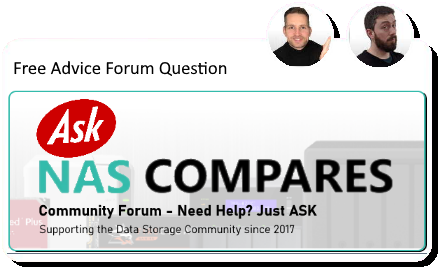06-20-2025, 12:10 PM
Great to hear from you again — and I’m glad I was able to help with your department’s NAS setup in the past. Based on what you’re trying to do now, there are definitely good options for creating a mirror between two QNAP systems without relying on cloud services or requiring local snapshots.
You’re right that Snapshot Replica isn’t ideal in your case — it requires creating and storing snapshots locally on the source NAS before replication can occur, which can be a challenge if you’re tight on space. As for Hybrid Backup Sync (HBS), it does support NAS-to-NAS syncing without any cloud login, though it tries to nudge users toward QNAP ID sign-ins. You can skip that and manually configure an RTRR or rsync job between the two NAS units.
To mirror the two systems:
1. Enable RTRR Server on the destination NAS (via HBS or Backup Station).
2. On the source NAS, create a sync job using HBS — choose one-way sync and select RTRR or rsync, providing the destination NAS IP and login credentials.
3. You can configure this to run on a schedule or in real-time for more immediate mirroring.
This works well for most sync and backup needs, but I also want to flag a newer solution QNAP now supports — Active-Passive High Availability (HA), which might be a perfect fit depending on your use case.
QNAP’s newer systems, particularly those running QuTS hero (ZFS-based), now support dual-NAS HA architecture. This creates a true high-availability cluster with two NAS units — one active, one passive — and supports automatic failover to ensure uninterrupted access. Key benefits include:
• SnapSync provides real-time block-level synchronization, so both NAS units always have consistent, up-to-date data.
• It’s managed via High Availability Manager, with an intuitive setup process and health monitoring for both systems.
• This gives you a cost-effective HA deployment option without the need for expensive proprietary appliances.
• It’s also a great long-term solution for critical business continuity if you’re working with high-value or time-sensitive datasets.
If your current systems support QuTS hero (or if you’re considering new hardware), this HA setup could offer not just mirroring, but true failover protection for 24/7 uptime — a step up from basic sync.
You’re right that Snapshot Replica isn’t ideal in your case — it requires creating and storing snapshots locally on the source NAS before replication can occur, which can be a challenge if you’re tight on space. As for Hybrid Backup Sync (HBS), it does support NAS-to-NAS syncing without any cloud login, though it tries to nudge users toward QNAP ID sign-ins. You can skip that and manually configure an RTRR or rsync job between the two NAS units.
To mirror the two systems:
1. Enable RTRR Server on the destination NAS (via HBS or Backup Station).
2. On the source NAS, create a sync job using HBS — choose one-way sync and select RTRR or rsync, providing the destination NAS IP and login credentials.
3. You can configure this to run on a schedule or in real-time for more immediate mirroring.
This works well for most sync and backup needs, but I also want to flag a newer solution QNAP now supports — Active-Passive High Availability (HA), which might be a perfect fit depending on your use case.
QNAP’s newer systems, particularly those running QuTS hero (ZFS-based), now support dual-NAS HA architecture. This creates a true high-availability cluster with two NAS units — one active, one passive — and supports automatic failover to ensure uninterrupted access. Key benefits include:
• SnapSync provides real-time block-level synchronization, so both NAS units always have consistent, up-to-date data.
• It’s managed via High Availability Manager, with an intuitive setup process and health monitoring for both systems.
• This gives you a cost-effective HA deployment option without the need for expensive proprietary appliances.
• It’s also a great long-term solution for critical business continuity if you’re working with high-value or time-sensitive datasets.
If your current systems support QuTS hero (or if you’re considering new hardware), this HA setup could offer not just mirroring, but true failover protection for 24/7 uptime — a step up from basic sync.





